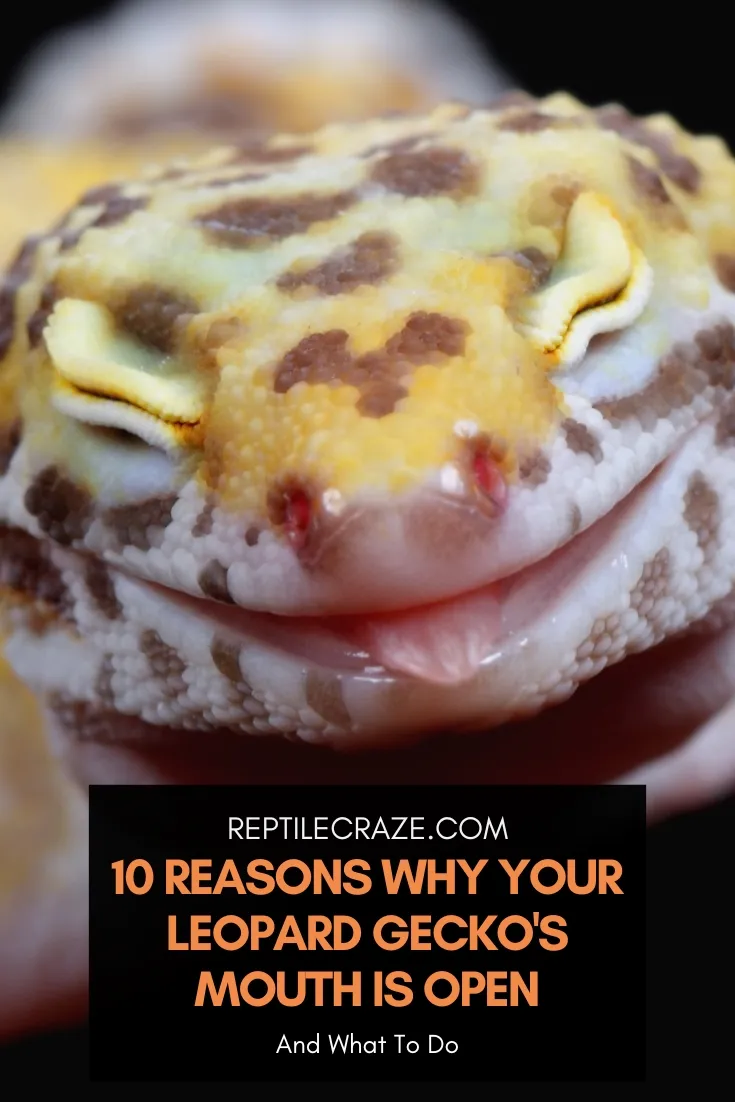
When you notice your leopard gecko is opening its mouth, you may start wondering if that is normal behavior. Your pet might seem cute when doing it, but sometimes, it can be a bit scary if you don’t know the cause. So, what could be the reasons why your leopard gecko’s mouth is open?
Your leopard gecko may open its mouth to yawn, when feeling stressed or threatened, to cool down, to get rid of stuck shed around its mouth, or to dislodge a piece of
Now that you know all the possible reasons for this behavior, let us take a deeper look into each one of them, and see when you need to start worrying about your pet opening its mouth:
Table of Contents
Possible Reasons Why Your Leopard Gecko Keeps Its Mouth Open
Let’s start with the most obvious one!
1. Yawning
Many reptiles, including leopard geckos, yawn from time to time.
Although no one is completely sure about the reasons why reptiles yawn, many people believe that it happens for the same reason it happens to humans: being tired.
Some reptile owners report that they have seen their leos yawn more frequently just after waking up or eating a copious meal, and even after a long day of playing.
However, sometimes they can yawn for no apparent reason.
You will know when your leopard gecko is yawning because you will notice it opens its mouth for less than five seconds, without emitting any sound, and it will seem happy and relaxed after doing so.
2. Stress
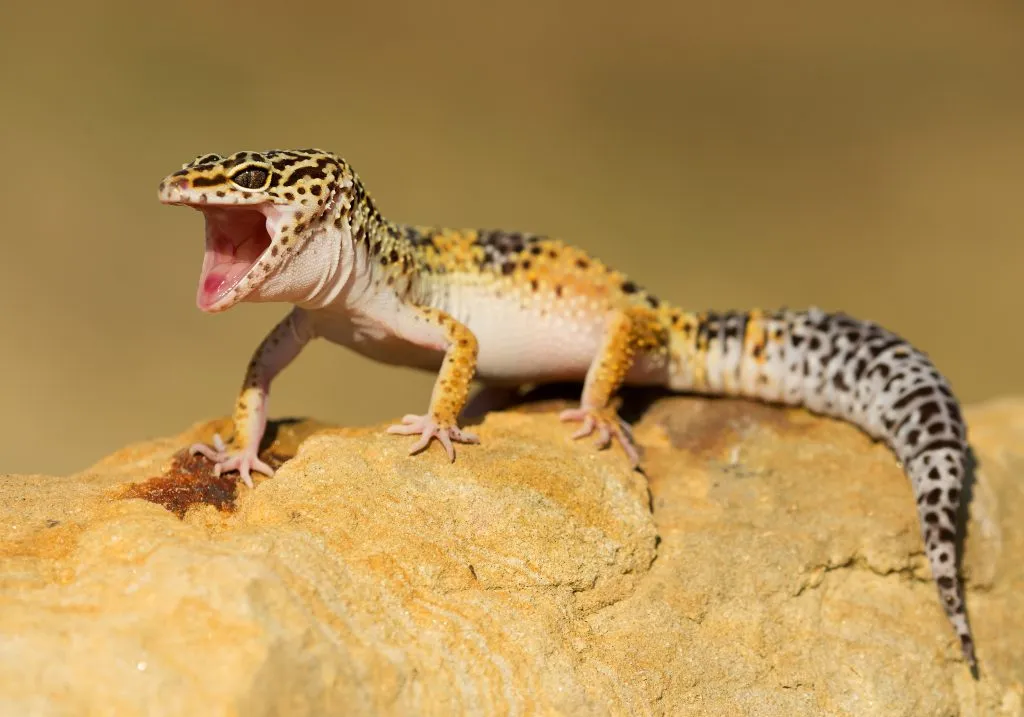
Sometimes, excessive mouth gaping may be a sign of stress.
Leopard geckos can get stressed easily due to improper husbandry or environmental conditions. Even having too many plants inside the enclosure may stress them out.
The same will happen when you bring your leopard gecko home for the first time or when you make some changes in their enclosure.
When stress is the reason for having their mouth open, they will also exhibit other signs of being stressed, like glass surfing, licking, and waving.
Sometimes, leos can also start head bobbing while their mouth is open, especially when you put one hand inside the enclosure. This is your pet’s way of letting you know it is feeling threatened by your proximity.
If you suspect stress is the reason why your leopard gecko is opening its mouth, then you need to find and correct all the possible stressors that could be bothering them.
3. Aggression
Even though leopard geckos are not known for being aggressive reptiles, they can show aggression signs when feeling threatened, including mouth gaping, hissing, or making a squeaking noise.
So, if you notice your gecko opening its mouth when you are about to pick them up, or after handling them for a while, then it probably means it wants to be left alone.
If this is the case, then you need to let your pet get used to you and be comfortable around you before attempting to pick it up again. Giving your leo treats will aid you in this task.
4. Cooling Down
Leopard geckos can start panting when they get too hot.
These reptiles are thigmotherms, which means they absorb heat through direct contact with rocks or other warm surfaces, and are also crepuscular, meaning that they are more active at dawn and dusk.
Therefore, they do not bask as most reptiles do, and they do not get much exposure to sunlight.
So, the way to keep an optimal thermal gradient for leos is by putting some heat mats in the enclosure. Keep in mind that the temperature range should be kept between 68 °F and 89 °F (20 °C and 32 °C).
So, if you notice your leopard gecko is gaping, sometimes accompanied by gular fluttering, and it is spending most of its time on the cool side of the
If this is the case, then immediately remove your leo from the
The best way to monitor the temperature range in the enclosure is by placing a thermostat and two thermometers in it (one at each end). Make sure to check them every day.
5. Stuck Shed
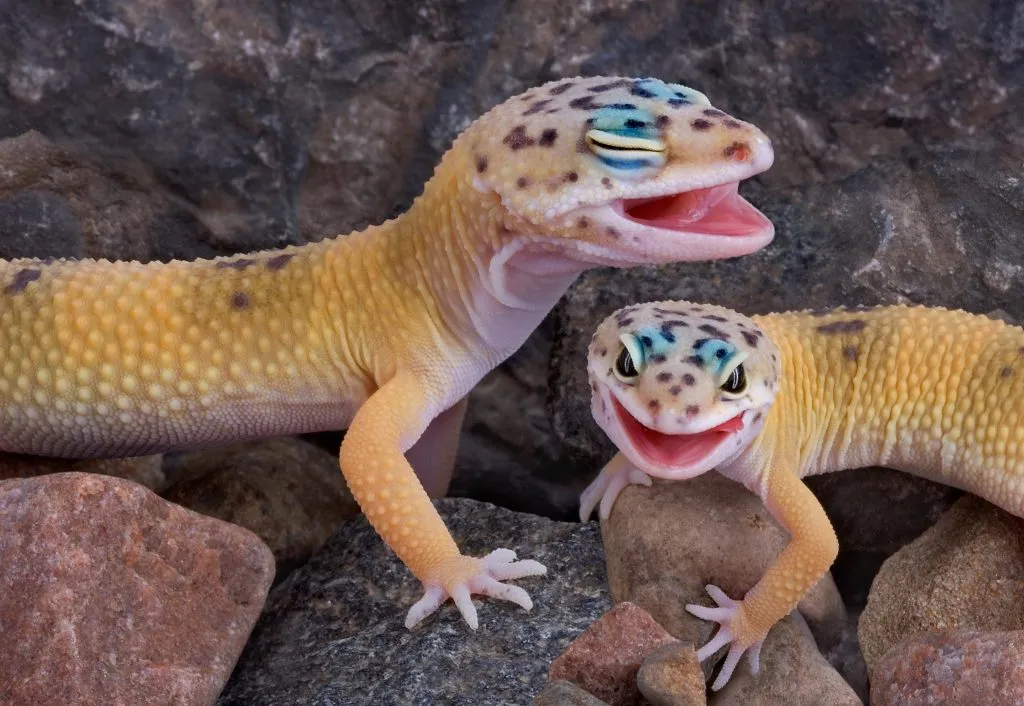
While shedding, your leopard gecko will be uncomfortable and may start behaving differently.
One of these abnormal behaviors could be opening and closing its mouth to try to loosen up the skin around its head and neck area.
So, if you see your leo mouth gaping while shedding, you can help accelerate the process by giving your pet a soak or a long misting session with lukewarm water.
6. Stuck Food
If your leo just finished eating, and you notice it starts opening its mouth and shaking its head, then it could mean that a piece of
It could be a cricket leg or maybe part of the exoskeleton of a mealworm, but, in any case, your pet feels uncomfortable and may end up throwing up its
In most cases, your leopard gecko is going to be perfectly able to resolve this situation on its own, so you do not need to intervene.
However, you need to be alert in case your leo starts showing signs of choking, which can be life-threatening.
7. Choking
Sometimes, leopard geckos will try to chomp down on an insect that is larger than they can handle. When this happens, the
In this case, your leo will open its mouth and shake its head, just like we explained earlier in the “stuck
In this case, you will need to help your pet by getting the insect out of its mouth. If you do nothing, your leo is going to stop breathing and it will die.
So, do not waste time and get a small tool, such as tweezers, and as gently as you can, get your leopard gecko’s mouth open. Then, see if the piece of
Do this slowly and with extreme care so as not to break off or lose hold of the insect, harm your pet, or accidentally injure its mouth in the process.
If the insect is too far down in your leo’s throat, or if you don’t have any tool within reach, then you can try squeezing a few drops of water or olive oil down your pet’s throat to see if that helps clear out the obstruction.
If nothing seems to help, then do not waste any more time and take your leopard gecko to the vet before it is too late.
To decrease the choking risk in leos, you should always feed them with feeder insects that are no larger than half the size of the reptile’s head.
Also, keep in mind that insects that have a hard exoskeleton, like mealworms, are a choking hazard for leopard geckos.
8. Metabolic Bone Disease
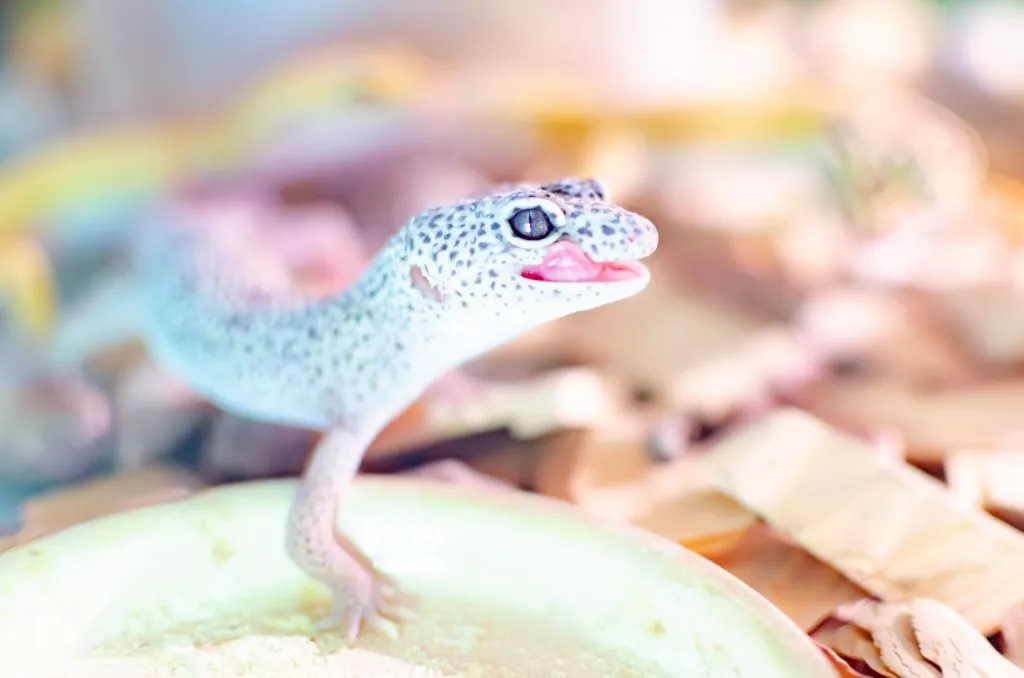
Metabolic bone disease (MBD) is common in leopard geckos due to insufficient supplementation of vitamins and minerals, accompanied by the lack of UVB lighting, and the failure to provide adequate temperatures for these reptiles.
All the previously mentioned conditions are necessary for appropriate vitamin D formation and calcium metabolism.
Therefore, MDB is characterized by the demineralization of the bones, which leads to bone deformities, fractures, mandibular softening (also known as “rubber jaw”), neurological symptoms, paralysis, and eventually the death of your pet.
As the bones of the jaw begin to soften, leopard geckos may keep their mouth open.
So, if you suspect your pet has MBD, you need to take it to a reptile vet immediately.
MBD is very painful, and even though there is no cure available, the progression of the disease can be slowed down when caught early.
To prevent MDB in your pet, you need to dust the feeder insects with a calcium supplement before each feeding and a multivitamin supplement containing vitamin D3 twice a month.
9. Respiratory Infection
The risk of leopard geckos getting respiratory infections is increased when they are exposed to low temperatures and high humidity levels.
Signs of respiratory infection may include:
- Mouth gaping
- Labored breathing
- Lack of energy
- Lack of appetite
- Weight loss
- Wheezing
- Secretion around the mouth and/or nose
- Bubbly saliva
As stated before, the temperature in the enclosure should range from 68 °F to 89 °F (20 °C and 32 °C), while the humidity levels should be kept between 30% to 40%.
Use a hygrometer, thermometer, and thermostat to monitor and check that the humidity and temperature conditions are kept at an appropriate range for your pet.
If you suspect your leopard gecko has a respiratory infection, take it to the reptile vet as soon as possible.
10. Mouth Rot
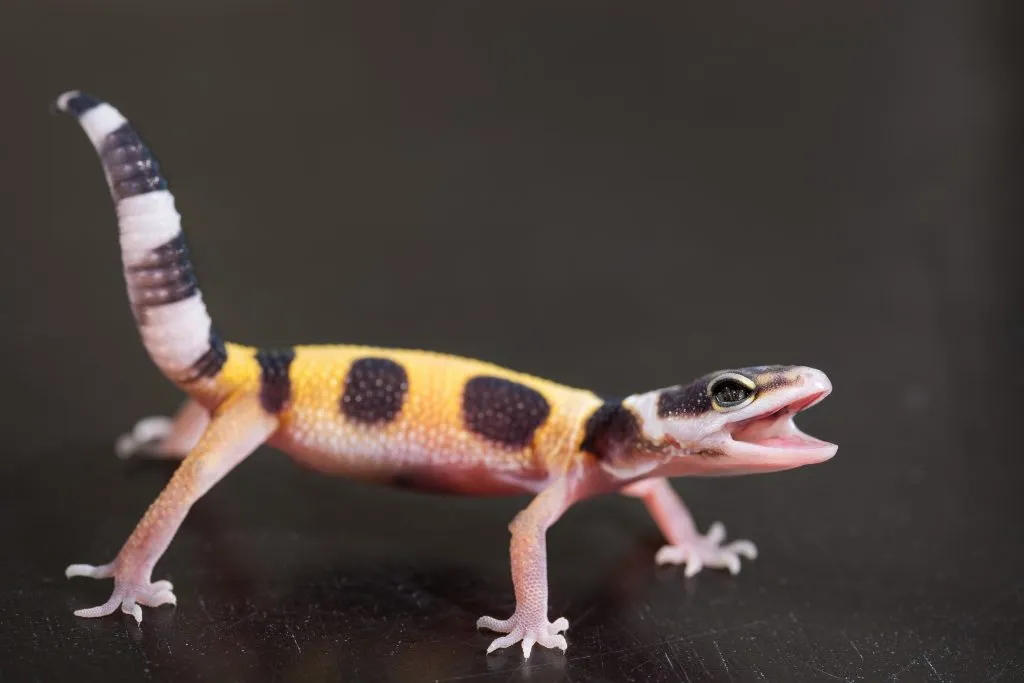
Stomatitis, also called mouth rot, is a common and serious infectious disease that can affect leopard geckos and cause them to keep their mouth open. Other symptoms of this disease may include:
- Excessive licking
- Inability to eat
- Refusal to eat or drink water
- Swollen gums
- Yellow plaque on the gums and teeth
- Swollen face or head
- Thick saliva
Mouth rot is often the result of a bacterial infection caused by a weakened immune system in your leopard gecko.
However, it can also be caused by untreated mouth injuries sustained by your pet, usually when fighting with other cage mates.
Your leo’s immune system can be affected by many factors, including long-term stress, poor diet, low temperatures, high humidity levels, parasites, and unsanitary living conditions.
If you believe your leopard gecko has mouth rot, separate it from its cage mates, and take it to the reptile vet as soon as possible. This disease will continue to get worse as long as your pet is left untreated.
Tip: If you fear that your leo might be suffering from mouth rot, read our article on that here. It will show you all the symptoms to look out for and what you can do about this disease.
- Eastern Rat Snake: Nature’s Pest Control and Fascinating Reptile - September 20, 2024
- Eastern Racer: The Fast and Agile Snake - September 19, 2024
- The Eastern Indigo Snake: The Majestic, Non-Venomous Hunter of the Southeast - September 18, 2024
